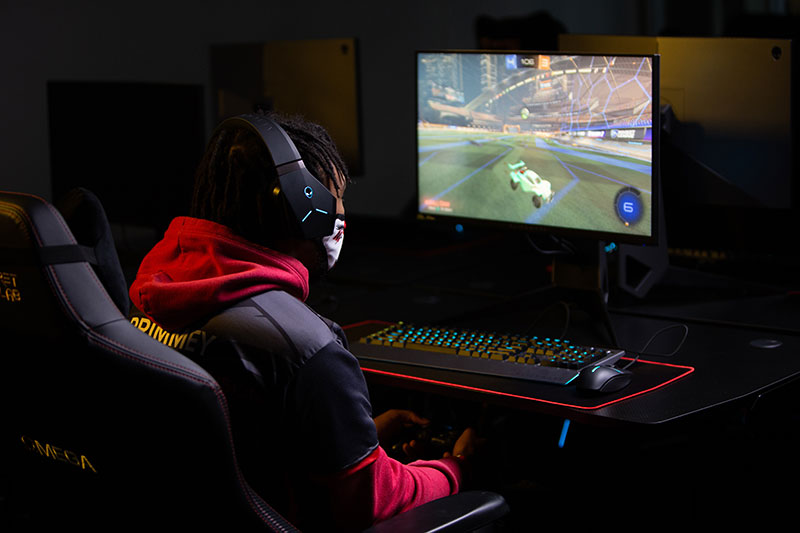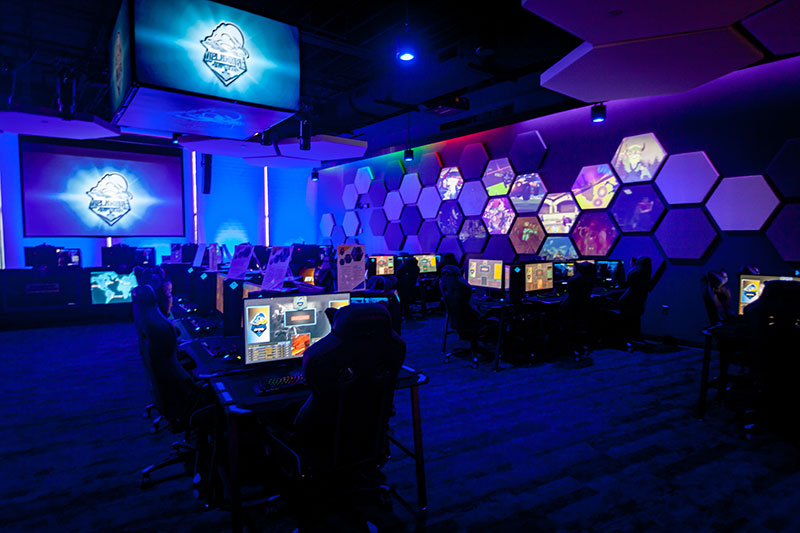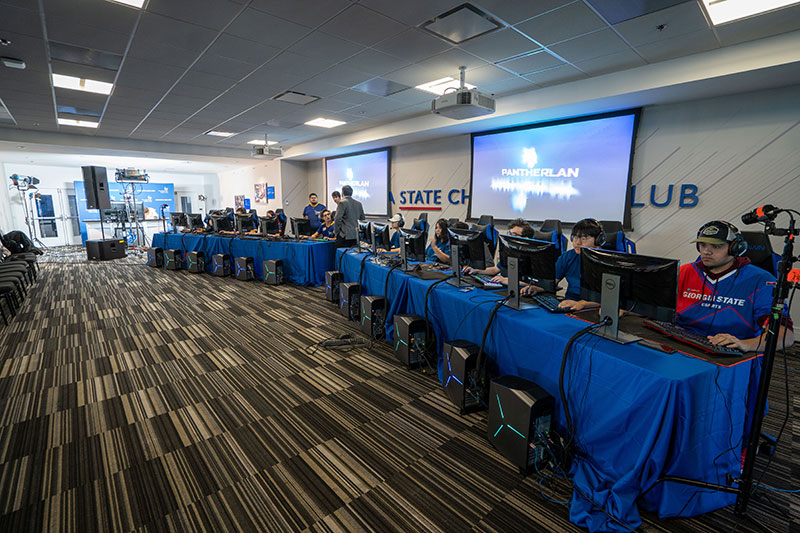Promising Practices for Implementing an Esports Program
Esports allows institutions to meet students where they are. As mentioned above, some groups of students who are interested in esports and gaming don't engage with many other communities or aspects of campus life. Building an esports program and gaming community on campus allows institutions to build connections with those students. Interviewees reported that an esports program helps these students make the connection that "I can do more with this than just a recreational hobby—I can turn this into a career" (see figure 6). Gaming won't always necessarily turn into a career, but for a percentage of students it just might. Students can find a career by making use of the skills, knowledge, and experience they gain from playing on a team or by working on any of the myriad tasks and jobs that surround esports.

Students get excited about combining their hobbies and interests with usable skills, and institutions need to take every opportunity they can to get students involved and engaged. Interviewees highlighted the ways in which students combined their interests in videography, art, marketing, business management, tech work, and more with work surrounding the esports programs at their institutions. They have observed students making the connection between gaming and their other interests by talking to them when they host community events and casual play nights and asking pointed questions about what aspects of esports they like most. These students go on to grow and thrive in their esports programs with initial mentoring by faculty and administrators, over time becoming more empowered and mentoring each other.
Involve the right groups and people as you build and grow an esports program. The launch of a successful esports program requires the combined knowledge and support of many different stakeholders across a campus. First, interviewees reported focusing on building a high-level steering committee to help identify the right groups to involve. However, before bringing the plan to VPs and cabinet-level staff, a helpful first step can be to meet one-on-one with anyone who might raise any strong objections in a meeting to help identify any issues or skepticism they might have. Taking this approach can ensure that answers and solutions can be provided to the committee.
A number of challenges and issues will arise in the creation of an esports program, and making sure you are connected with the people who can answer those questions is key. Who those people are might vary depending on the institution, but across the board, one of the most important groups identified by our interviewees was IT. IT staff are essential to ensuring the necessary technology, networking, upkeep, and processes are in place to keep the gaming experience running smoothly. They can help enable the computers to run the newest games and make sure the broadcast and streaming teams have what they need to engage the virtual community.
Three other very important groups also regularly came up in interviews. Facilities are obviously key to finding a space for an esports facility. Facilities staff can help identify potential rooms to refurbish, ensure the proper HVAC systems are in place for cooling an area with hot gaming computers, and work with IT to ensure sufficient wiring and power are available. Athletics and Student Services are two other groups that may be involved in the management of an esports program. Interviewees reported that both groups were able to handle the creation and growth of an esports program, though Athletics may have an especially critical role to play in the future as esports continues to gain recognition as a sport among colleges and universities.
Interviewees reported reaching out to a few other groups for assistance on their journey to start and grow their programs. Legal departments help with managing the policies and regulations of adding a new varsity team and with answering other legal and policy questions that might come up. Foundations helped several institutions find new methods of funding by reaching out to alumni donors interested in supporting esports at their institutions. Marketing can help reach potential recruits and raise awareness in the community to make partnering with local businesses for sponsorships easier. Finally, academic deans and faculty can provide mentoring and support for teams and the communities that arise around a program.
Create an esports space for visibility and to generate interest. Esports arenas are visually exciting and enticing for most anyone who walks by them. They're generally filled with technology and visually stunning lighting and designs (see figure 7), and they can showcase current games, teams, and players on big screens for in-person viewers. Interviewees at institutions with an arena reported that they worked to ensure their arenas draw the eyes and interest of passersby to help build excitement about esports.

Even if space in the student center isn't immediately available, institutions reported other options and solutions (see figure 8). For example, COVID-19 has altered the availability of facilities and space usage in many campuses, leaving some classrooms and computer labs unused. Some institutions have been turning these spaces into their first esports arena by installing stadium seating, stages, and projection screens.

Look to the existing community for assistance and resources. While each institution will face unique challenges as an esports program is developed, many other challenges have already been faced and overcome. The community of esports in higher education is full of passionate and friendly people who have worked hard to build foundations other institutions can build on. Reaching out to others in the field with questions or concerns will likely yield positive results, and there are other ways to connect to the esports community as well.
Though the NCAA is not involved in esports after it voted to table the governing and hosting of championships in 2019 for a variety of reasons (chief among them, the fact that companies that own these games, such as Riot Games, host their own college tournaments), many other organizations have been created to fill the void of the NCAA to host intercollegiate tournaments, including the National Association for Collegiate Esports (NACE) for varsity teams and the Collegiate Star League (CSL) and Tespa for varsity or club teams and players.
Organizations such as the North American Scholastic Esports Federation (NASEF) help provide resources for students and administrators alike, and the National Association of Esports Coaches & Directors (NAECAD) can help institutions newer to esports find an experienced coach for teams, provide professional development opportunities and resources, host clinics or conferences for newer coaches and directors, and generally provide helpful knowledge and experience.